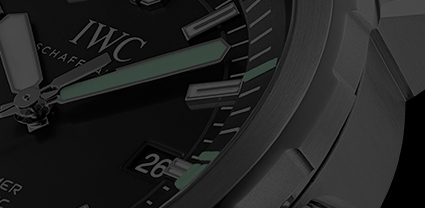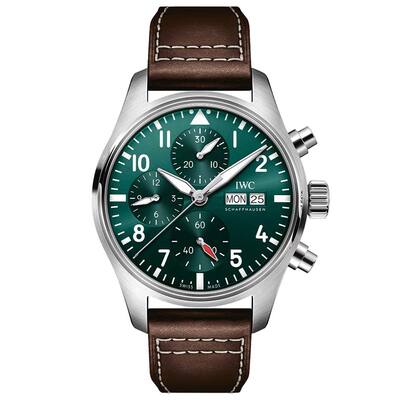

D-10, SOUTH EXTENSION-II
DELHI -110049
243 A, EMPORIO MALL, VASANT KUNJ
DELHI -110070

Experience the epitome of precision and aviation heritage with IWC Schaffhausen Pilot's Watches, available exclusively at Kapoor Watch Co., your authorized retail store for these timeless timepieces. Our curated selection caters to men who appreciate the perfect fusion of functionality and style in a wristwatch.
The Essence of IWC Schaffhausen Pilot's Watches
IWC Schaffhausen is renowned for crafting iconic Pilot's Watches, and as authorized retailers, we bring you the essence of aviation history right to your wrist. These watches pay homage to the pioneering spirit of aviation, reflecting the brand's dedication to precision engineering and unmistakable design.
Explore the World of Pilot's Watches for Men
The collection of IWC Schaffhausen Pilot's Watches for men showcases a range of options that encapsulate the spirit of adventure. From the classic elegance of the Pilot's Automatic to the technical prowess of the Pilot's Chronograph, our selection ensures you find the perfect Pilot's Watch that resonates with your unique style and passion for aviation.
Timekeeping Precision Meets Aviation Heritage
IWC Schaffhausen Pilot's Watches are not just timepieces; they are a testament to innovation, durability, and aviation heritage. Inspired by the needs of aviators, these watches offer exceptional accuracy, robustness, and readability. Whether you're a seasoned pilot or an aviation enthusiast, our Pilot's Watches are designed to be your reliable companions both in the cockpit and on the ground.
A Timepiece for Every Occasion
While IWC Schaffhausen Pilot's Watches excel in aviation, they are equally suited for everyday wear. Their versatile design allows you to seamlessly transition from the cockpit to the boardroom or a casual evening out. These watches are a statement of style and functionality, making them the ideal accessory for modern men who appreciate the finer things in life.
IWC Schaffhausen: Timeless Elegance for Men
Our commitment to providing you with the finest IWC Schaffhausen watches for men reflects our passion for horology. IWC Schaffhausen watches are not just about telling time; they tell a story of Swiss excellence, precision, and innovation. When you choose an IWC Schaffhausen Pilot's Watch from Kapoor Watch Co., you're not merely buying a watch; you're investing in a piece of history that transcends generations.
Visit Kapoor Watch Co. Today
At Kapoor Watch Co., we invite you to explore the world of IWC Schaffhausen Pilot's Watches and discover the perfect companion for your wrist. As authorized retailers, we ensure that each timepiece you choose not only meets the highest standards of craftsmanship but also aligns with your distinctive style and adventurous spirit. Elevate your wristwear game with an iconic Pilot's Watch from Kapoor Watch Co. and experience the allure of aviation history with every glance at your wrist.